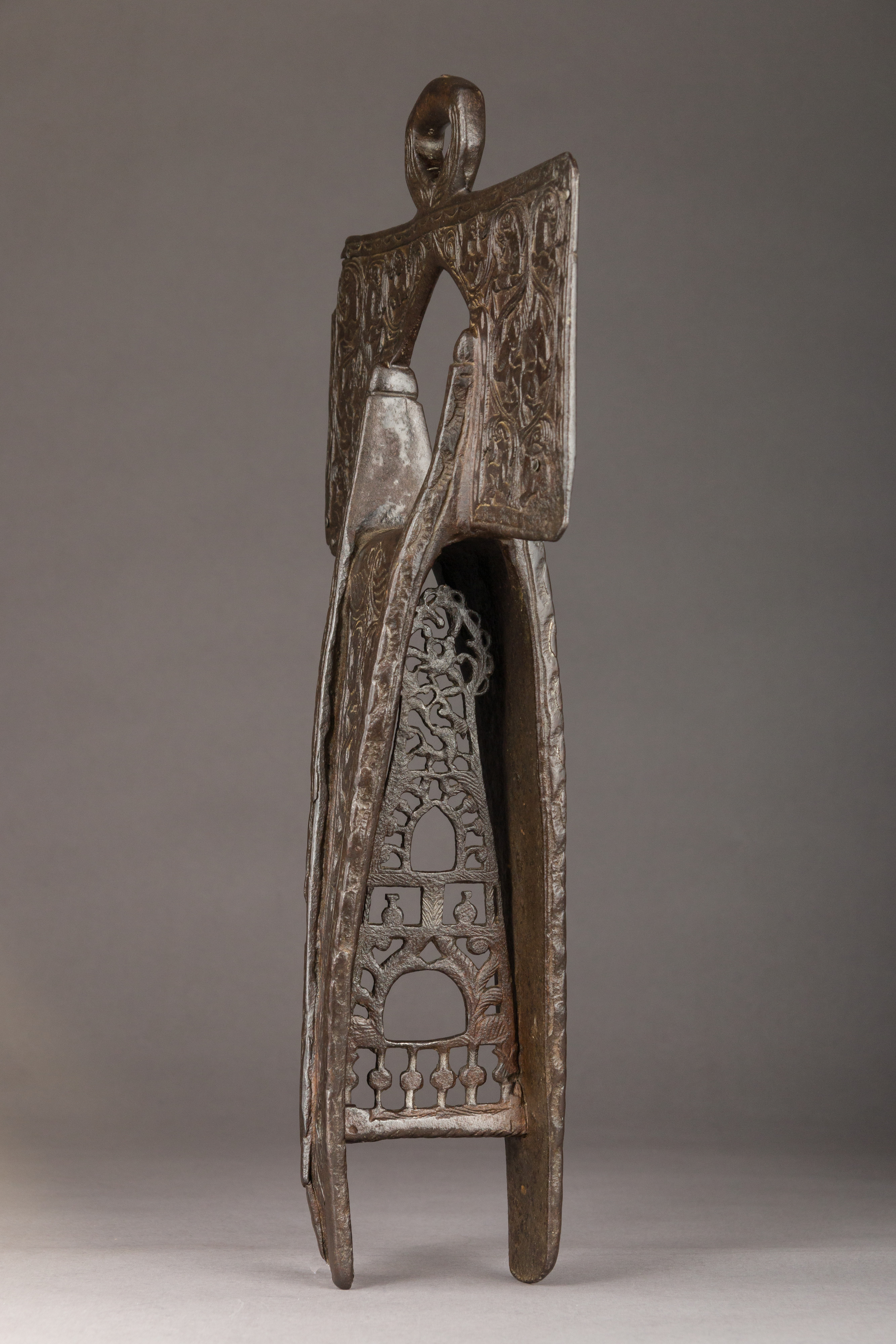Stirrup
Not on view
This heavy iron cross-form stirrup is decorated in low relief with vegetal scrolls inhabited by lions, dogs and birds, motifs possibly inspired by imported Chinese textiles and ivories. The silver nails on the corners of the side arms would have attached silver ornaments (now lost). The two elongated flaps are connected with a flat piece of iron pierced as a house façade motif showing a balcony, windows with vases, and vegetal scrolls inhabited by animals.
Estribos de cruz, as they are called in Spanish, were particularly popular in Mexico during the 18th century, and were used by cavalry. Oversized and very heavy, many of them feature elaborate decoration, sometimes enriched with silver elements. Horses were already at this time a mark of social status in Mexican society, and the display of rich, beautiful, and shiny horse tack was a way to highlight this fact. Despite (or perhaps because of) its popularity, however, this type of stirrup was officially forbidden for soldiers by royal decree in 1772, and then completely in 1778, mostly because of the danger they presented to bystanders.
Due to rights restrictions, this image cannot be enlarged, viewed at full screen, or downloaded.
This artwork is meant to be viewed from right to left. Scroll left to view more.



